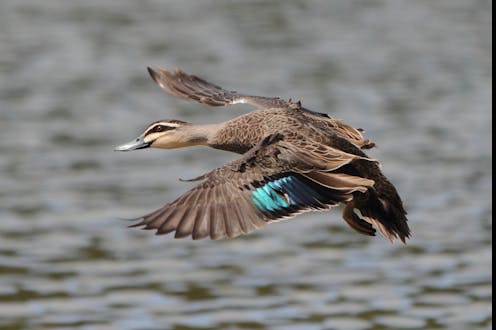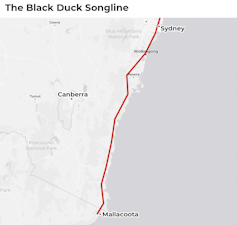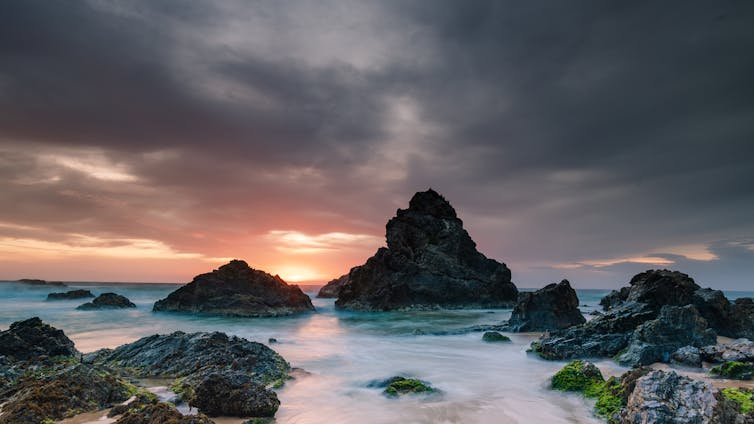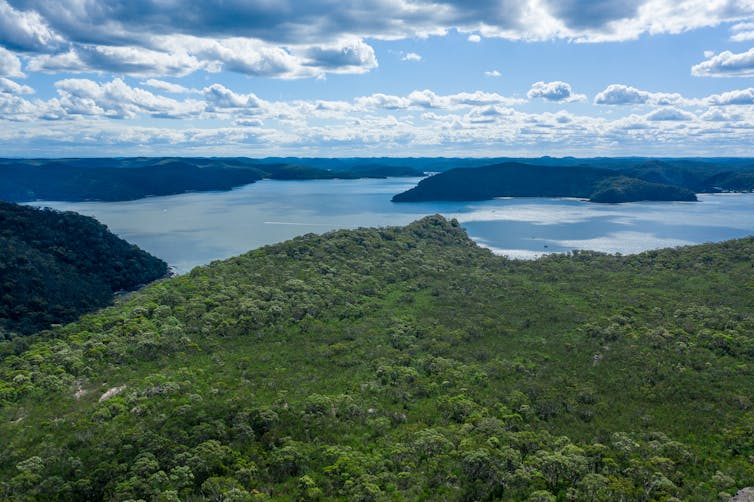Source: The Conversation (Au and NZ) – By Robert S. Fuller, Adjunct fellow, Western Sydney University

Aboriginal and Torres Strait Islander readers are advised this article contains names of people who have died.
Songlines criss-cross across Australia. They are one of the foundational spiritual features of the world’s oldest continuing culture.
Australian Aboriginal peoples had oral cultures: while there are no Bibles or Qurans to document their spirituality, the Dreaming stories of Ancestral creators who formed the land and the features were shared through song. By walking and singing the songlines, those creators are celebrated by the passing generations.
Most of our knowledge of songlines comes from Aboriginal peoples in central and northern Australia, a well-known example being the Seven Sisters Songline, which crosses much of Australia from the west coast to the east.
But, due to invasion and attempted cultural destruction since 1788, knowledge of songlines in southeast Australia has been limited. Now, new research has begun reawakening a dormant Black Duck Songline covering 300 km along the New South Wales South Coast.
Read more:
Songlines: Tracking the Seven Sisters is a must-visit exhibition for all Australians
Umbarra and Wumbarra
The Black Duck Songline, as current Aboriginal knowledge holders confirm, travels up the South Coast from over the Victorian border to the Hawkesbury River, north of Sydney, passing through many important cultural locations of the Yuin and Dharawal peoples of the region.

The Conversation/Open Street Map, CC BY-ND
The name comes from the Pacific Black Duck (Anas superciliosa), known as Umbarra to the Yuin and Wumbarra to the Dharawal.
The Yuin story of Umbarra comes from Wallaga Lake near Narooma on the NSW far south coast. Umbarra is an animal hero, rather than a Creator, and is the totem and protector of the Yuin peoples from the Dreaming.
A Yuin man, Merriman, had Umbarra as his totem. When his people were in danger, Umbarra warned them so they could take refuge on what is now called Merriman’s Island in Wallaga Lake.
Umbarra became the Yuin protector, and, through kinship linkages, the bird is equally important to the Dharawal.
One of the authors of this piece, Robert Fuller, was exploring the astronomy and songline connections of the Saltwater Aboriginal peoples of the NSW coast.
Through a yarning process, speaking to Yuin and Dharawal knowledge holders about the cultural astronomy of their communities, the importance of Umbarra to the Yuin peoples became clear, as did the route of the songline.

Shutterstock
The Black Duck Songline has now been traced through multiple Aboriginal communities. Knowledge holders speak about how their people travelled along songlines for trade, to attend ceremonies and to access resources.
Read more:
How ancient Aboriginal star maps have shaped Australia’s highway network
How a songline is reawakened
A songline is not just a map across Country.
It is a celebration of the stories which make up the songline, and these stories are encompassed in the form of song. The melody stays consistent as a songline passes through different language groups and dialects along the route.
A songline is never extinguished, although the Country through which it passes may be dying because it is not being sung. This has given rise to the Aboriginal expression to “sing up Country”: refreshing the songs and the Country to which the songs belong.
The Black Duck Songline was not unknown to the knowledge holders of the South Coast, but the details of the route had begun to be lost. Probably the last public walk of the songline was by Uncle Guboo Ted Thomas (1909-2002), coinciding with the Bicentennial in 1988.
Other knowledge holders who learned from Uncle Guboo have been able to confirm details of the songline, and members of the Yuin and Dharawal communities are keen to recover the full knowledge of the route of the songline.

Shutterstock
After the Hawkesbury River, it is possible the Black Duck Songline may continue north, eventually turning west and south, via the Narran Lakes and the Snowy Mountains, connecting with its origin on the Gippsland Coast, forming a circle.
The major focus of the reawakening of the songline will be to find the songs that make up the story and try and connect them in the correct sequence and with the correct spiritual locations along its route.
If the Black Duck Songline can be awakened, this could be a model for the recovery and reawakening of other songlines in areas of Australia where Aboriginal knowledge has been suppressed.
![]()
Robert S. Fuller received funding from the Australian Government Research Training Program (RTP) Scholarship
Graham Moore and Jodi Edwards do not work for, consult, own shares in or receive funding from any company or organisation that would benefit from this article, and have disclosed no relevant affiliations beyond their academic appointment.
– ref. ‘Singing up Country’: reawakening the Black Duck Songline, across 300km in Australia’s southeast – https://theconversation.com/singing-up-country-reawakening-the-black-duck-songline-across-300km-in-australias-southeast-167704








